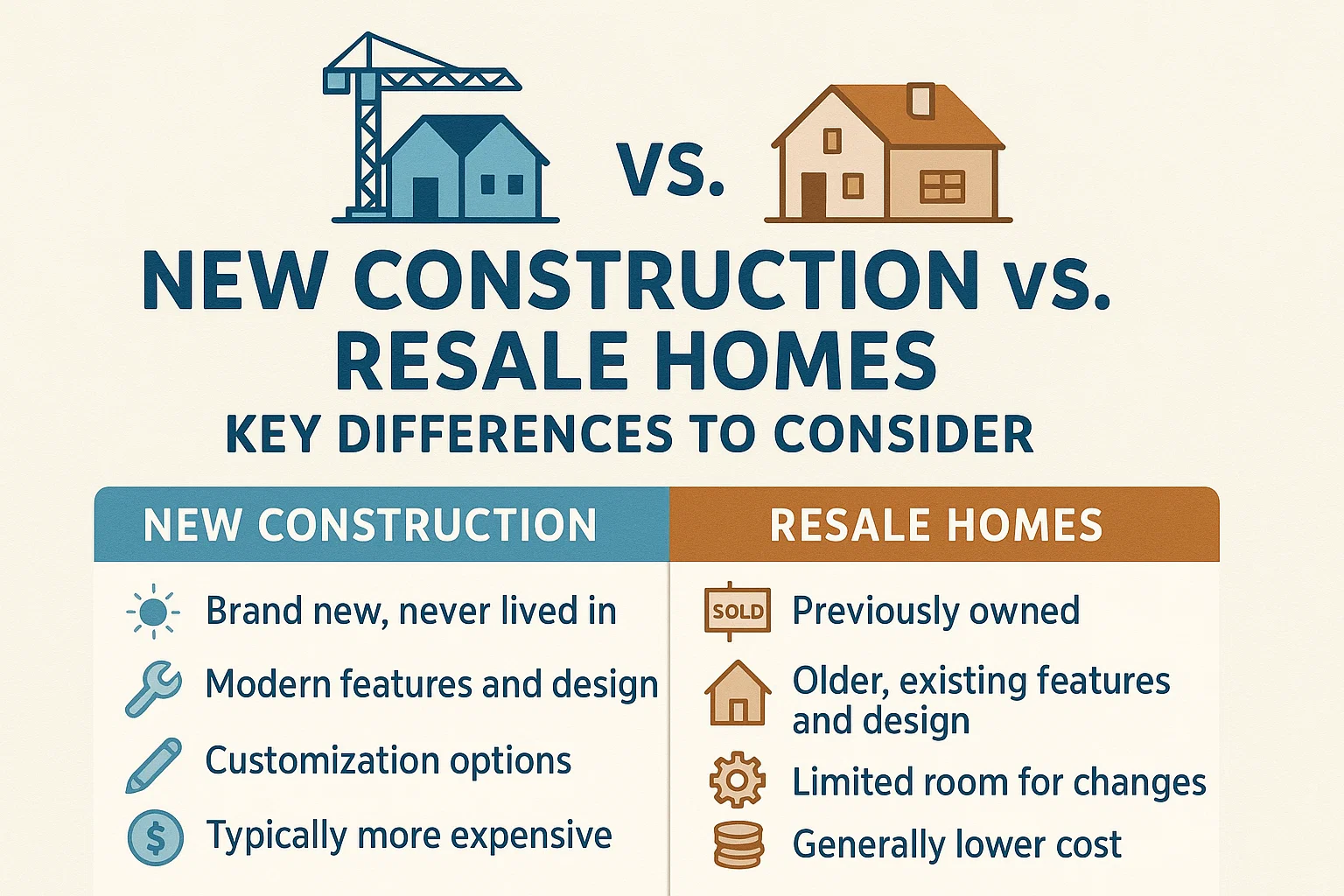New Construction vs. Resale Homes: Key Differences to Consider

New Construction vs. Resale Homes: Key Differences to Consider
Whether you’re a first-time buyer thirsting for knowledge or a resale homeowner eager to learn more about newly built homes, it’s best to start with an understanding of the differences between a new construction home (for our purposes, a new home) and a previously-owned or resale home. You can define these properties based on how they differ in four key areas: construction quality, cost of ownership, design preferences, and energy efficiency. Let’s take a closer look.
Quality Construction
Quality of construction is the number one attribute for homebuyers when they’re ready to purchase a home. New homes today are built with state-of-the-art products, techniques, and materials that must meet the latest building codes enacted by states and localities. Regardless of your budget, your new home will typically include important safety features such as:
- Smoke detectors
- Ground-fault circuit breakers
- Lead-free paint
- Basement exit routes
Homebuyers can rest easy knowing that the accumulated wear and tear associated with a resale house is not an issue with a new home. Inspections are conducted at no added cost to new homebuyers at multiple points during the construction process, ensuring compliance with the latest building codes for electrical work, plumbing, and energy-efficient features like insulation.
Low Cost of Ownership
One factor to consider is lower initial costs. Builders often cover some closing costs, reducing the cash needed upfront. Additionally, new homes come with move-in packages that include appliances, eliminating the immediate need to purchase big-ticket items.
“Most builders pay some closing costs, so buyers need less cash upfront. Sellers don’t always pay closing costs. Builders also provide a move-in package with appliances, so buyers don’t need to worry about buying big items right away.”
New homes are built to modern energy standards, resulting in lower utility bills over time. According to the U.S. Department of Energy, new homes are 30% more energy efficient than those built just five to seven years ago. These savings can be redirected toward vacations, education, retirement, or other priorities.
New homes also minimize maintenance costs, as warranties often cover structural elements (up to 10 years) and systems/materials (1–2 years). Unlike resale homes, buyers avoid negotiating repairs post-inspection—builders address issues before move-in.
Designed for Modern Lifestyles
Today’s buyers prioritize open floor plans, spacious kitchens, and flexible spaces. New homes average nearly 1,000 sq. ft. larger than resale homes and often include:
- Private owner’s baths
- Multi-generational living areas
- Customizable rooms (e.g., libraries, studies)
- Smart storage solutions (e.g., drop zones, charging stations)
“We downsized by about 700 square feet, but our new house seems like it has twice as much space because of the open floor plan and efficient storage. Our 1950s house didn’t have much storage at all.”
New construction allows for personalization, from hardwired tech setups to first-floor owner’s suites for aging-in-place flexibility. Even quick move-in homes offer customization options to reflect your style.
Energy Efficiency
New homes integrate energy-saving features like Energy Star appliances, advanced insulation, and high-efficiency HVAC systems. The HERS Index provides a clear measure of energy performance:
- Typical resale home: 130
- Standard new home: 100
- Highly efficient new home: 70 (30% better than standard)
“Our utility bills dropped from $300–$400/month in our 1950s house to $60/month. The energy efficiency and solar panels made a huge difference.”
Options like solar panels, tankless water heaters, and geothermal systems can further reduce energy consumption.
Additional Perk: Safer Neighborhoods
New communities are often situated near urban hubs and top-rated schools, offering safety and convenience. Families benefit from proximity to amenities and high-achieving school districts.
For more information on the homebuying process, explore our New Home 101 Guidebook or visit the Learn Center for quick tips and advice.
